The Benefits of Pilates from Prenatal to Postpartum
Pilates during pregnancy is a great way to ensure that you are maintaining an ideal posture to support your growing baby, muscles are strengthened and lengthened (versus shortened and tightened), and your body continues to move in a safe and controlled way where the load and stresses on your joints are minimized. Exercise during pregnancy requires modifications depending on mama’s tolerance to various positions and resistance, which can be provided in both Pilates mat and equipment formats.
Here are five ways Pilates can be particularly helpful during pregnancy:
Breathing. Can help decrease stress, create awareness in the body, improve posture, and ensure movement of the lungs and rib cage - which can get stiff as baby grows.
Abdominals. They should be lengthened while they are strengthened in order to provide both stability (for your torso and pelvis, and the contents within) and mobility (flexibility) as baby grows and you prepare for delivery. It’s important to avoid increasing tension and tightness to prevent abdominal separation (diastasis recti).
Hip, pelvis, and leg muscles. There needs to be a balance of these muscles to promote ideal posture and stability around the pelvis to support the weight of baby on the joints. An imbalance can lead to misalignment, injury during daily activities, or difficulty with delivery.
Chest and back. Stretching the chest muscles and strengthening the upper back muscles can help mama prepare for activities such as breastfeeding, baby carrying, and stroller pushing.
Spine. Flexibility of the spine in all directions not only helps with carrying and delivering baby, but it also helps keep the muscles around the torso flexible so that you can continue to perform your daily activities with some ease.
In the postpartum stage, props on the mat and springs on the equipment can provide helpful assistance for movement. Pilates can support rebuilding of abdominal strength and stability, heal diastasis recti, improve posture, establish a gravity-eliminated position for mamas who are experiencing pain in standing, prolapse, pubic separation/instability, and create a safe and enjoyable exercise environment.
A comprehensive Pilates class or private session can be extremely helpful during your preparation for birth and your recovery afterwards, but it is essential that all movements are completed in a safe and controlled manor. When it comes to exercise during and after pregnancy, it is important to consult with a physician or licensed medical professional if, and when, Pilates and other forms of exercise are safe for you to perform.
BONUS: Check out the video below to see Katie discuss the importance of exercise throughout pregnancy with Third Coast Birth & Baby’s Director of Prenatal Programs, Shawna Mertens!
